- Joined
- Jan 28, 2011
- Messages
- 97,409















http://www.gamewatcher.com/interviews/the-banner-saga-2-interview/12534
WITH THE RELEASE FAST INCOMING, CHRIS CAPEL CHATS WITH STOIC ABOUT THE CONTINUING BANNER SAGA
Now we greatly enjoyed the original The Banner Saga, but upon reaching the end it was clear the story wasn’t over. The good news is that Banner Saga 2 is due out soon so we thought it’d be a perfect time to catch up with developer Stoic on what they’re bringing to the sequel. Chris Capel caught up with Arnie Jorgensen and John Watson from Stoic at the EGX Rezzed event and chatted about the game.
GameWatcher: Okay, let’s start with the introductions!
Arnie Jorgensen: I’m Arnie Jorgensen, the Art Director at Stoic.
John Watson: And I’m John Watson, the Tactical Director of Stoic.
GameWatcher: What have you learned from the development and reception of The Banner Saga?
Arnie Jorgensen: We’ve learned a lot from both. We’ve watched a ton of Lets Plays, heard a lot of unvarnished feedback, and most people thought the game was really good and wanted more. Therefore we didn’t want to rethink the whole thing or give players brand new systems so it’ll feel like you’re flowing right from the first game into the second. We’ve done some major improvements to combat. The feedback we received suggested that players loved the combat but after a while they thought it got monotonous. So for TBS2 we’ve got a bunch more win scenarios, we’ve got blockers, and there’s a lot more banter within the combat so it feels more like part of the story.
John Watson: Characters will come onto the board, talk to each other, animations will play, objectives change.
Arnie Jorgensen: That took the lion’s share of the time, improving the combat. We’ve also done some cool things with the Clansmen. Players by the end felt Clansmen were unimportant. We’ve got new systems for them in TBS2. Clansmen can forage for Supplies, and the more you have the more Renown you’ll get during Wars if you save them. You can also convert them to Fighters who can protect your caravan during these Wars and make things easier for you.
John Watson: They also consume more resources so you have to find the right balance. If you have too many Fighters you’ll have a powerful force but no Supplies!
Arnie Jorgensen: And get less Renown! We want to pull the Clansmen into the game mechanics more than we did in Banner Saga.
John Watson: In general we try to communicate things better to the player, like the systems we have in place, what they need to achieve and how they go about doing so.
Arnie Jorgensen: We’ve also taken the Training tent and improved it. John’s created nine different scenarios that teach players the deeper dynamics of combat. A lot of people bumbled through the combat in TBS without ever understanding the combat mechanics whereas this time we’re taking them by the hand and helping them to learn in a fun way.
GameWatcher: The Training does seem expanded a lot, I don’t even remember using it in the first game!
Arnie Jorgensen: A lot of people went in, tried it, and never went back. But now going through the different scenarios nets you a lot of Renown too.
John Watson: We’re trying to give players access to the information that may have been hidden previously, such as a lot of the advanced interactions between units.
Arnie Jorgensen: After that we hope players will take this information and apply it to their Hero units. The Training tent is also where you convert Clansmen to Fighters so it’s a lot more important to TBS2 than it was before. Testers have been saying that we seem to have sanded off the rough edges from the first Saga too. We’re hoping players come in to TBS2 thinking that it’s got all the things they like from the first game but a lot more polished.
GameWatcher: I can definitely say that I was one of those who bumbled through the first game’s combat…
Arnie Jorgensen: Yeah, we’ve seen plenty of people get way late into the game and still not know why shots missed for example, so we dropped the ball a little on that. We’re really making a concerted effort to teach players the game a little better. We also want to do it through the story more organically. Instead of a big tooltip popping up we introduce players to new systems through the characters.
GameWatcher: It’s still the on-rails style of the first game of course, but in TBS2 do players have any additional choice over which way to go?
Arnie Jorgensen: It’s similar to the first one. You head to the same locations but how things play out there is entirely up to you and the decisions you’ve made along the way. I think if we had another team working on this we could start diverging but it would be a lot of work for a tiny team like Stoic to do that!
GameWatcher: How big’s the team at the moment?
Arnie Jorgensen: We have four full-time in-house people.
John Watson: And we also have contractors from around the world, such as music, audio, QA, some art, VO, publishing, but mostly just those four people!
GameWatcher: Do you prefer keeping a small team?
Arnie Jorgensen: One of the things we started off saying is, if we can stay small and lean then we can work on the games we want to work on. We don’t need to sell a million units. The bigger a team gets the more units it needs to sell, and that’s when you start looking at what games people are playing and try to make games like that rather than making games we want to make.
John Watson: Growing a studio has a lot of risks involved with it. If you’ve got 20 people then your studio has to be pulling in a quarter of a million dollars a month. The downside with being really small though is you have to do everything!
GameWatcher: Of course you were both at Bioware previously weren’t you?
John Watson: Yes, we both worked on Star Wars: The Old Republic which had about 600 people working on it, and that’s an army! It’s different certainly. Every single developer in that situation focuses on their specialty. I worked on character and combat animations and that was my thing, I didn’t do anything else. Whereas on Banner Saga I’d have a hand in every part of the game.
Arnie Jorgensen: It’s two different mentalities really. It’s not like indie’s cooler or AAA’s cooler. I have a lot of friends still working AAA and they love it.
John Watson: On the other hand if you’re the only programmer on a game you have to do everything. Tools, ability systems, the packaging, the .exe installer!
Arnie Jorgensen: The only thing that really got me down on AAA, other than I’m used to doing my own thing, is that we can make our own decisions and nobody’s there to say “financially this might not be a smart move”. You sit in a lot of meetings where they say things like “people don’t want that” and we have to just say “okay”.
John Watson: Working on a big MMO, if you’re a lead of any sort you’re spending half your day in meetings. In The Banner Saga there were many times when we came across a problem and the three of us would meet for 20 minutes with a whiteboard and just make a decision. That’s really refreshing. But there’s room for both kinds. In AAA you’re working alongside some of the top people in the industry, like the best artists or programmers, and they’re there if you want to ask them questions. If I get stuck I can just walk down the hall and ask someone. With independent it’s more of a challenge communicating with other developers. It’s important to have a support network, getting involved with independent game developers.
GameWatcher: Speaking of finance, I think a lot of the community were expecting you to go back to Kickstarter for the sequel, how have you managed to bypass this?
Arnie Jorgensen: We made enough on the first game to make TBS2. On TBS1 we had our own funds and we could’ve made the game but because of the Kickstarter we could make a bigger game. We might not on the third Banner Saga either but we might, as it creates a big passionate community. There are also tough things about doing a Kickstarter. It does take months of time to put it all together.
John Watson: One shouldn’t underestimate how much work goes into running a Kickstarter campaign. You create a community and then you’re engaging with that community for the rest of development. It’s a full-time job! We discussed about whether to do another Kickstarter or whether to just get cracking.
Arnie Jorgensen: Would fans prefer a Kickstarter or the game three months early? I think they’d rather just get the game! I mean, money’s one thing but in a small team time is your biggest resource, and by running a campaign you’re giving up time.
John Watson: Preparation will take at least a month, campaign will take a month, and the aftermath will take a month. Then for the whole next year or two you have reward fulfilment, community management… out of a four person team one of those people will have to commit themselves to the backers and that’s a serious commitment. It was great though for getting us started, and for anyone with a great idea and maybe a playable prototype it could be a great experience. It was a slam-dunk for us.
GameWatcher: You mentioned a third game, have you planned Banner Saga as a trilogy or are you going further than that?
Arnie Jorgensen: It was designed as a trilogy. Actually we had the whole story laid out and we were going to do it as one game but we were told that we were crazy, it’d take too long. The plot’s complete. Saying that, we have so many things we want to do that we’re leaving on the cutting room floor that it’d be really nice to get back to. We often kick around the idea of after finishing Saga branching out and doing some episodic content based in the same world. We could have some real fun with it.
John Watson: A lot of things happen to characters in the world that you don’t get to see. There are plenty of stories we could tell, perhaps a 1-2 hour experience.
Arnie Jorgensen: Once we get Saga 3 done we’ll look at it and see if people want more. It’s a big world and if there’s interest there we might well continue it. We love this world!
GameWatcher: Would you consider different types of game in this world?
Arnie Jorgensen: Absolutely, in fact we’ve been talking about that very thing. We’ve already had a board game done, Warbands.
John Watson: Of course we built a multiplayer game first, Banner Saga: Factions, and there’s a community around that who are really into it. Factions is a tiny little game that we never really supported, but if we made a game that focused on the combat and gave you things to do, RPG character levelling, something like that. We wished we had time to support Factions, but it really needs a team just for that.
GameWatcher: I was going to ask if you’d considered doing a Factions 2.
Arnie Jorgensen: That’s what we mean, like a relaunch. Something where you can build cities and characters up too. We’ve spoken to other teams about doing games in the Banner Saga world but Factions is something we really want to do ourselves!
John Watson: If it were a totally different genre that we weren’t really experts in we’d be more willing to give it up. In fact the Warbands board game was designed almost entirely by Megacon, with our feedback but they’re the experts, they knew what they were doing. But a competitive online combat game, we already have ideas on how to do that.
GameWatcher: At the end of the first game both caravans we’d been playing as joined up. Do they stay that way? Do they get along?
Arnie Jorgensen: Well, you’ll have to see! [we laugh]
John Watson: Rook and Alette are both morally good people, whereas Bolverk [the huge Varl in charge of the Raven mercenary group], his ethics just involve fulfilling his contract and aside from that he’s fairly amoral. So there’s a bit of natural tension between their motivations.
SPOILER WARNING FOR THE FIRST GAME’S ENDING IN THE NEXT QUESTION!
GameWatcher: Going into the second game, the final choice in TBS1 places either Rook or Alette as the caravan leader. Was it difficult to have two completely different characters as player characters?
Arnie Jorgensen: That was really handled by Drew McGee, who’s the writer of TBS2 and he helped us on the first game too along with Alex Thomas. It was a real burden on Drew! It was like writing three games almost, and I think it became bigger than he thought it would. There was certain corners we tried to cut that became obvious we shouldn’t, so we just had to do it right.
John Watson: And there’s so many other characters who may or may not be with you based on your choices in the first game, and some may have important stories in TBS2.
Arnie Jorgensen: Keeping these stories in line became a real juggling act, and going into the third game it’ll probably be even bigger!
John Watson: We’ll just have to kill everyone off except one character! [we laugh]
GameWatcher: Yeah, a brand new set of characters for the next game!
John Watson: Yes, let’s kill everyone off!
GameWatcher: Annoyingly I seem to have lost my save from the first game.
Arnie Jorgensen: I’m sorry. In Saga 2 at least you can either import a savegame or play the default and just choose a leader.
GameWatcher: Did you consider doing something like Dragon Age: Inquisition and allow players to micromanage their choices?
Arnie Jorgensen: We did kick that idea around but I didn’t really like it. I didn’t really want players to try and ‘game’ the system or know where the choices are. We wanted it to be more like a novel, where you’re never sure what’s going to happen.
John Watson: More mysterious that way. On the other hand the save files are all in text format so if a player wants to edit the save I totally encourage that!
GameWatcher: Is Austin Wintory back as the composer?
Arnie Jorgensen: Yes, Austin’s back, and we’ve got the Colorado Symphony Orchestra with him doing the music. We recorded that back in December. It’s amazing. It’s a little bit louder, a bit brasher than the first, and unbelievably beautiful.
GameWatcher: Did you consider more voice acting?
Arnie Jorgensen: There is more narration, but not full VO.
John Watson: We’ve also done more video scenes. In TBS1 we really frontloaded the animated scenes at the beginning, and in TBS2 we not only made more of them but we spread them out more.
GameWatcher: Okay, let’s role-play! You’re each in charge of your own caravan travelling down the river in The Banner Saga. You see a group of people begging for help on the shore. They could have supplies with them or have skills you need, or they could just be a burden. Either way a group of Dredge are approaching fast and stopping is risky. What do you do?
John Watson: I would pull over and rescue them! And fight the Dredge if necessary.
Arnie Jorgensen: I would talk to one of my trusted friends like Oddleif and they might say something like “no there’s a Fire Witch in there” or “they look like nice people” and I’d probably listen to that advice.
GameWatcher: Do you think you’d last long running a caravan in this world?
Arnie Jorgensen: Um… no. [we laugh] I don’t think enough like a Viking probably, and it’s easy for me in a game to say “let’s not throw them food” but in real life I couldn’t do that!
John Watson: I would brashly run into every situation and probably get everyone wiped out.
Arnie Jorgensen: Certainly in TBS2 I’ve found a lot of people who want something and I keep going “no” and moving on!
John Watson: There are certainly cases in both games where helping people doesn’t work out in your favor.
Arnie Jorgensen: Do you pull over?
GameWatcher: Yes I do, and I usually pay for it!
Arnie Jorgensen: Yeah, like “why did I do that?” You keep getting your hand slapped but you keep going for it.
GameWatcher: So when’s Banner Saga 2 out?
Arnie Jorgensen: We’re launching April 19th on PC and Mac, and hopefully consoles soonish after.
GameWatcher: Okay, thanks for talking with me!
Arnie Jorgensen: No problem, we appreciate it!
Thanks again to Arnie and John for talking with me about The Banner Saga series and a reminder again that Banner Saga 2 will be out April 19th with our review hopefully coming out the same day. If I can successfully bumble my way through it, anyway.

















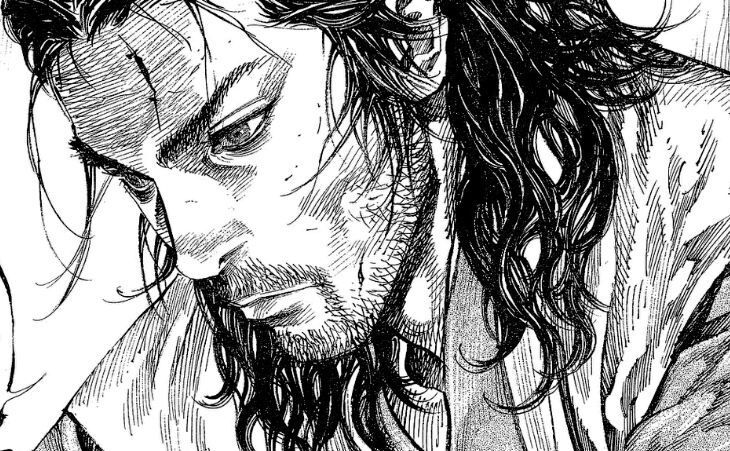
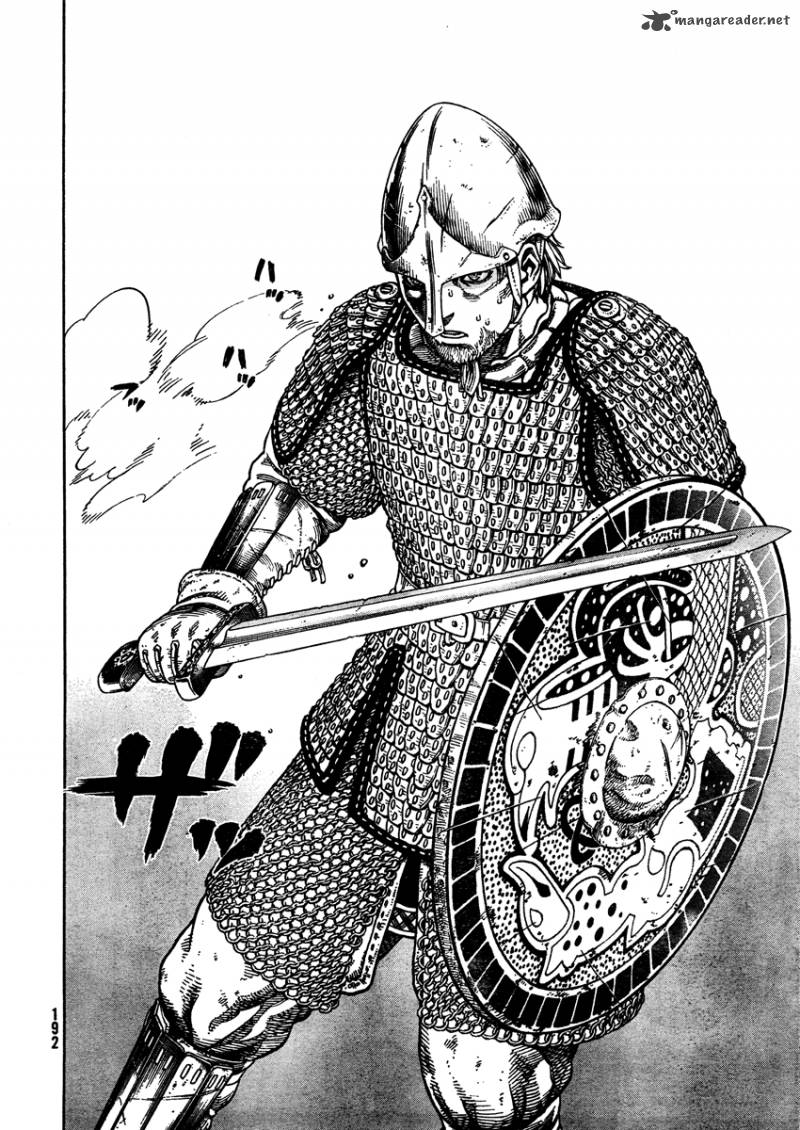






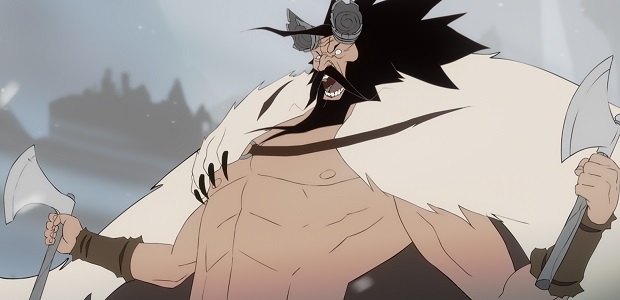
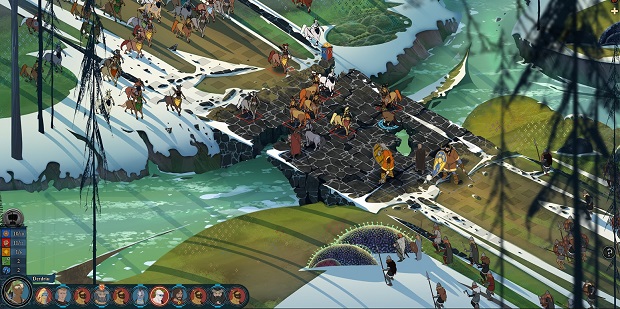
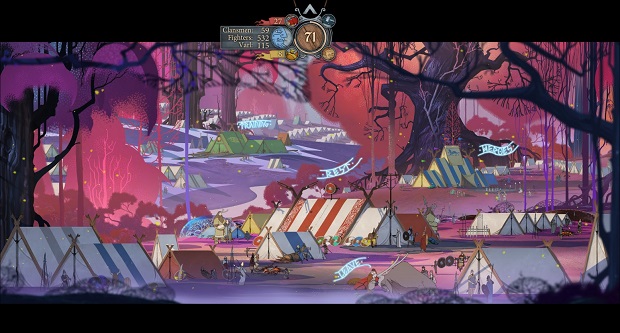
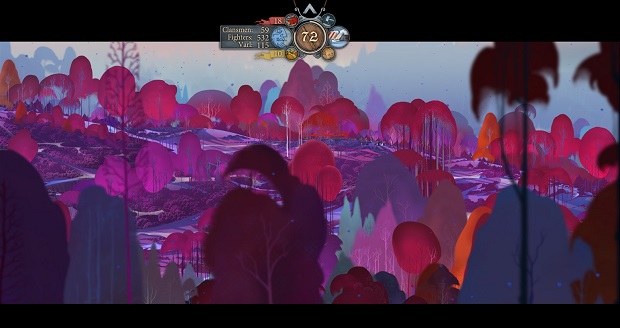
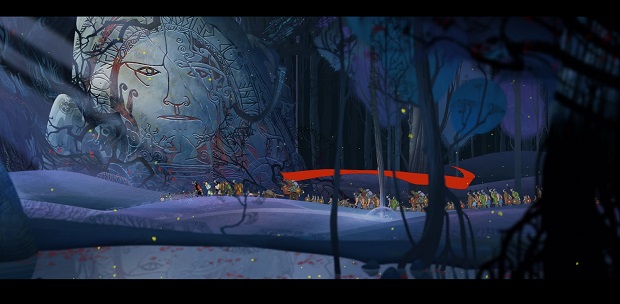
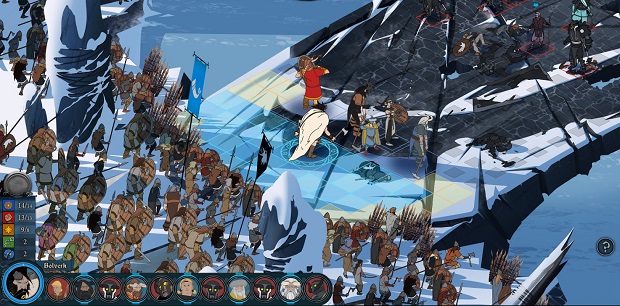
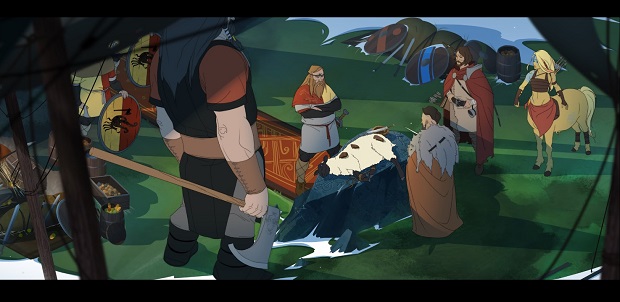
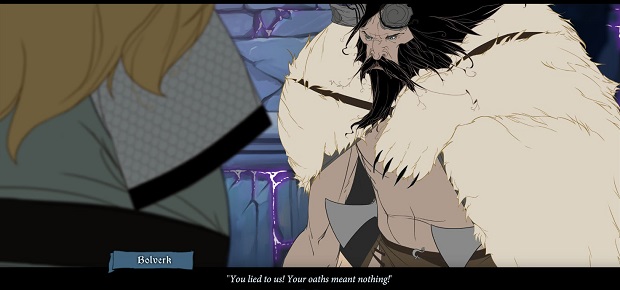


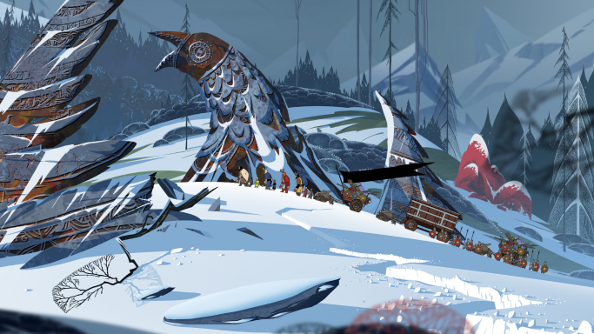
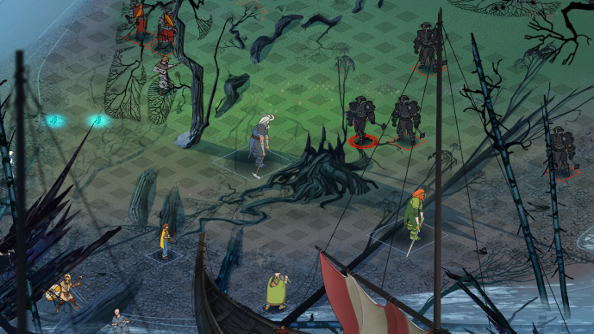
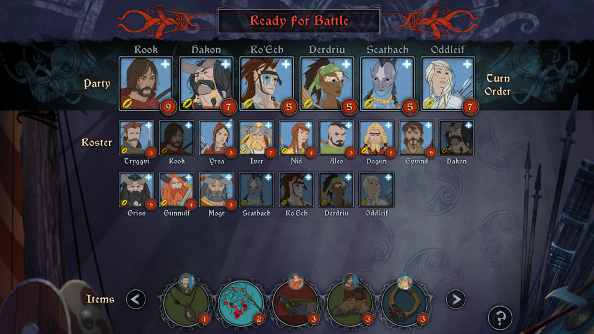
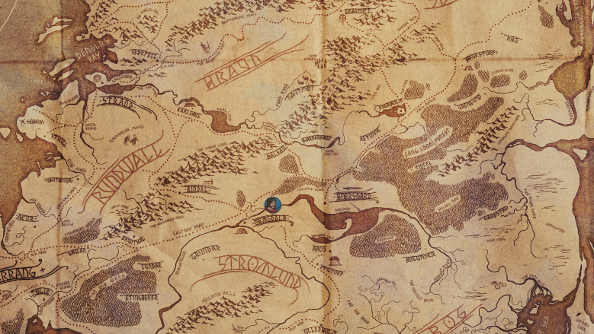
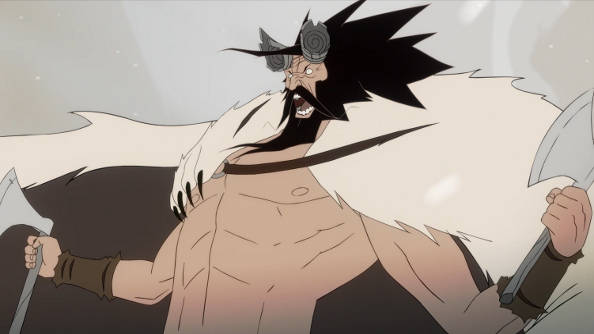
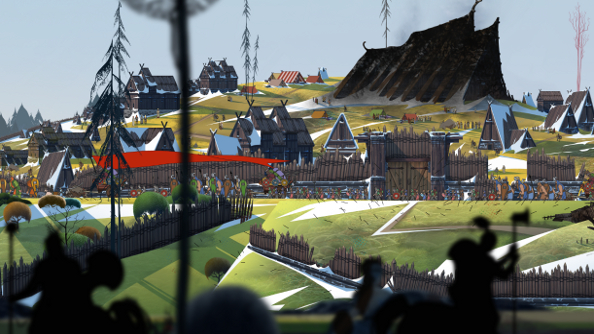
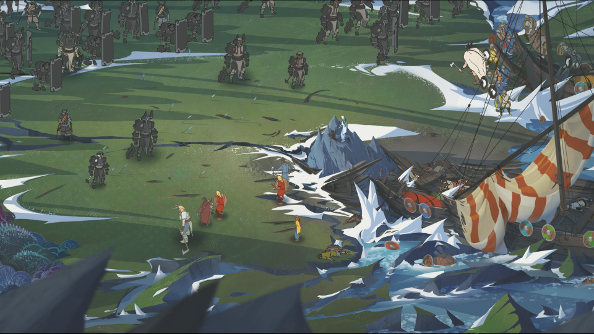

![Glory to Codexia! [2012] Codex 2012](/forums/smiles/campaign_tags/campaign_slushfund2012.png)








